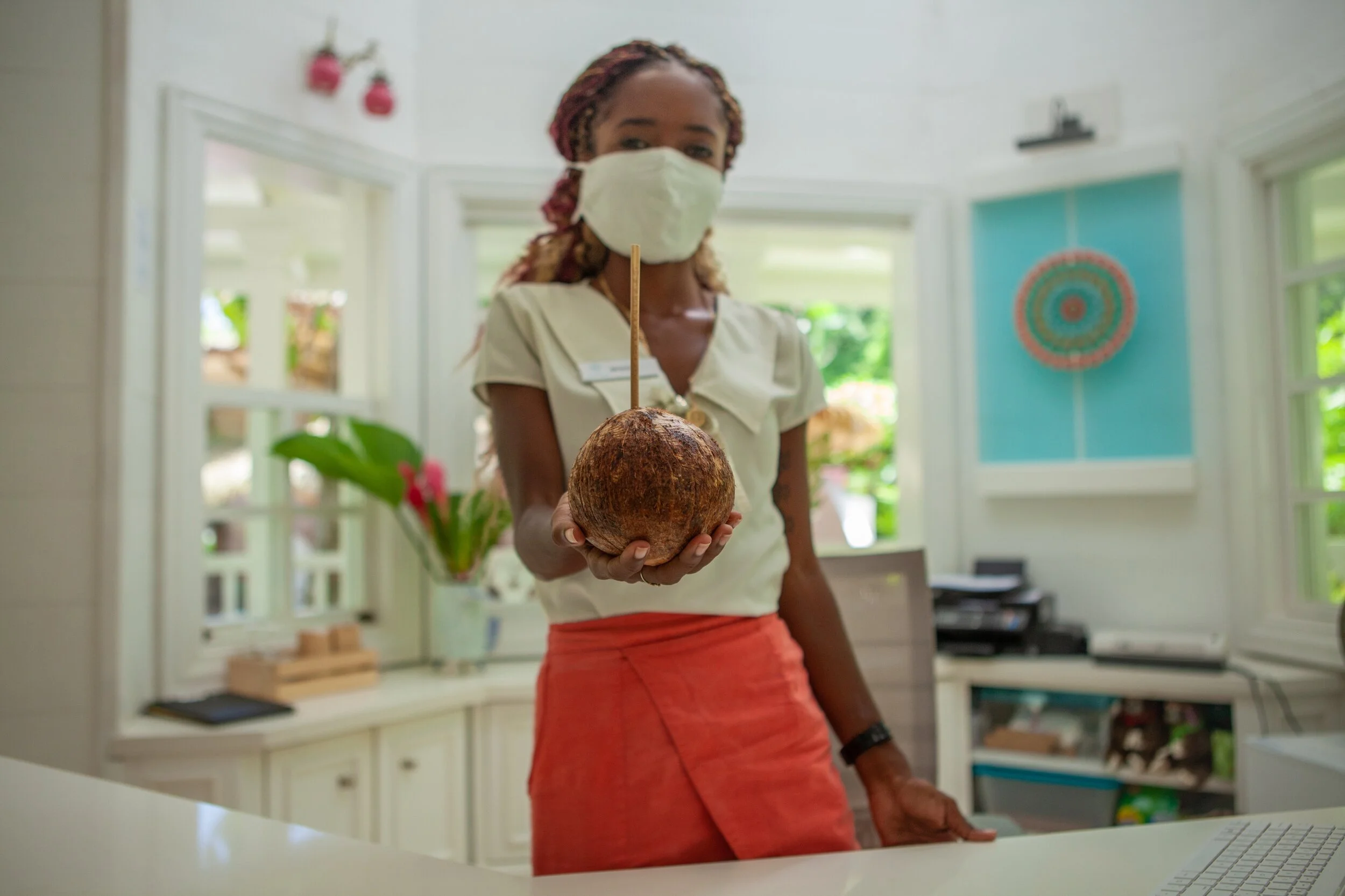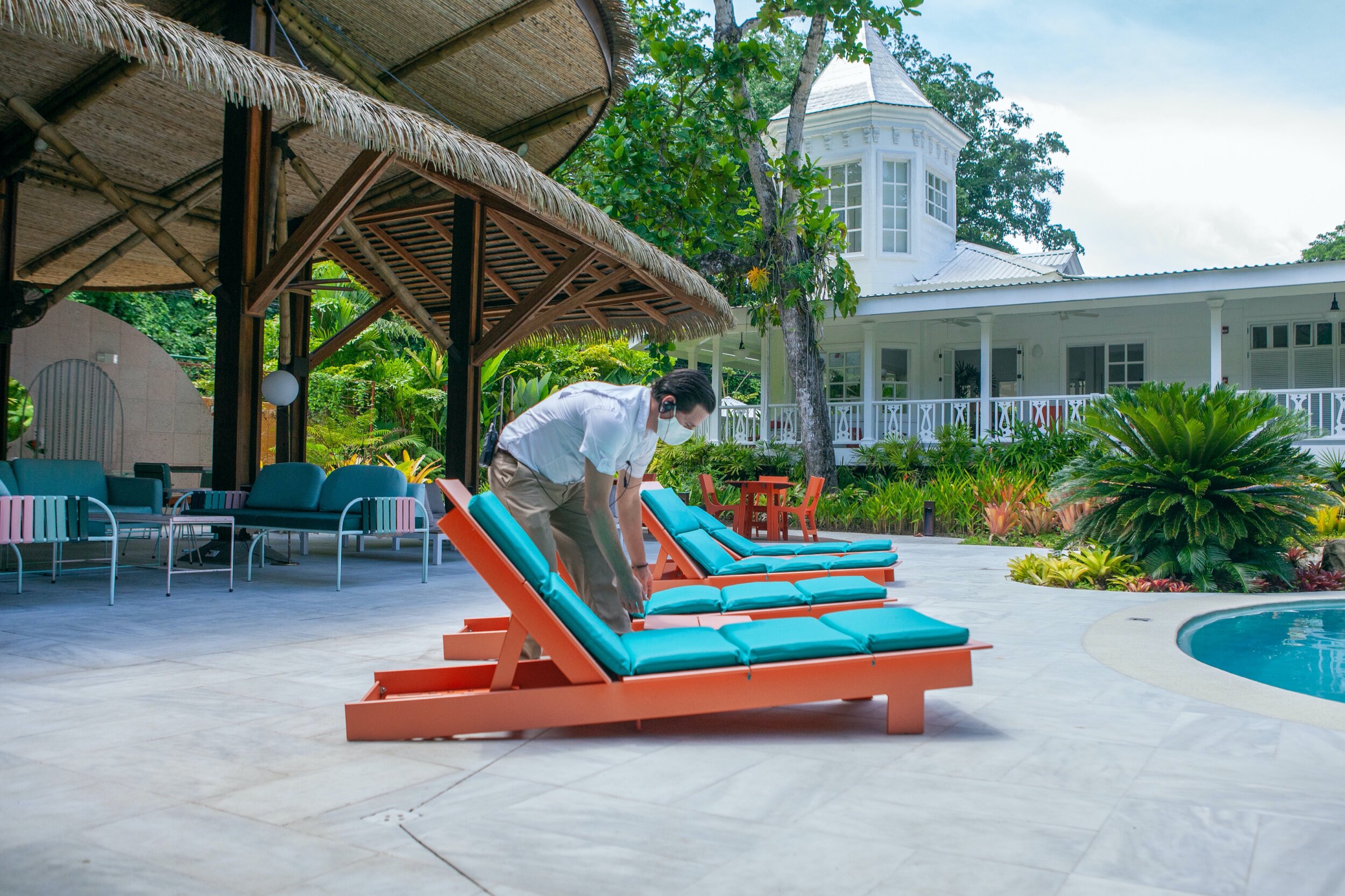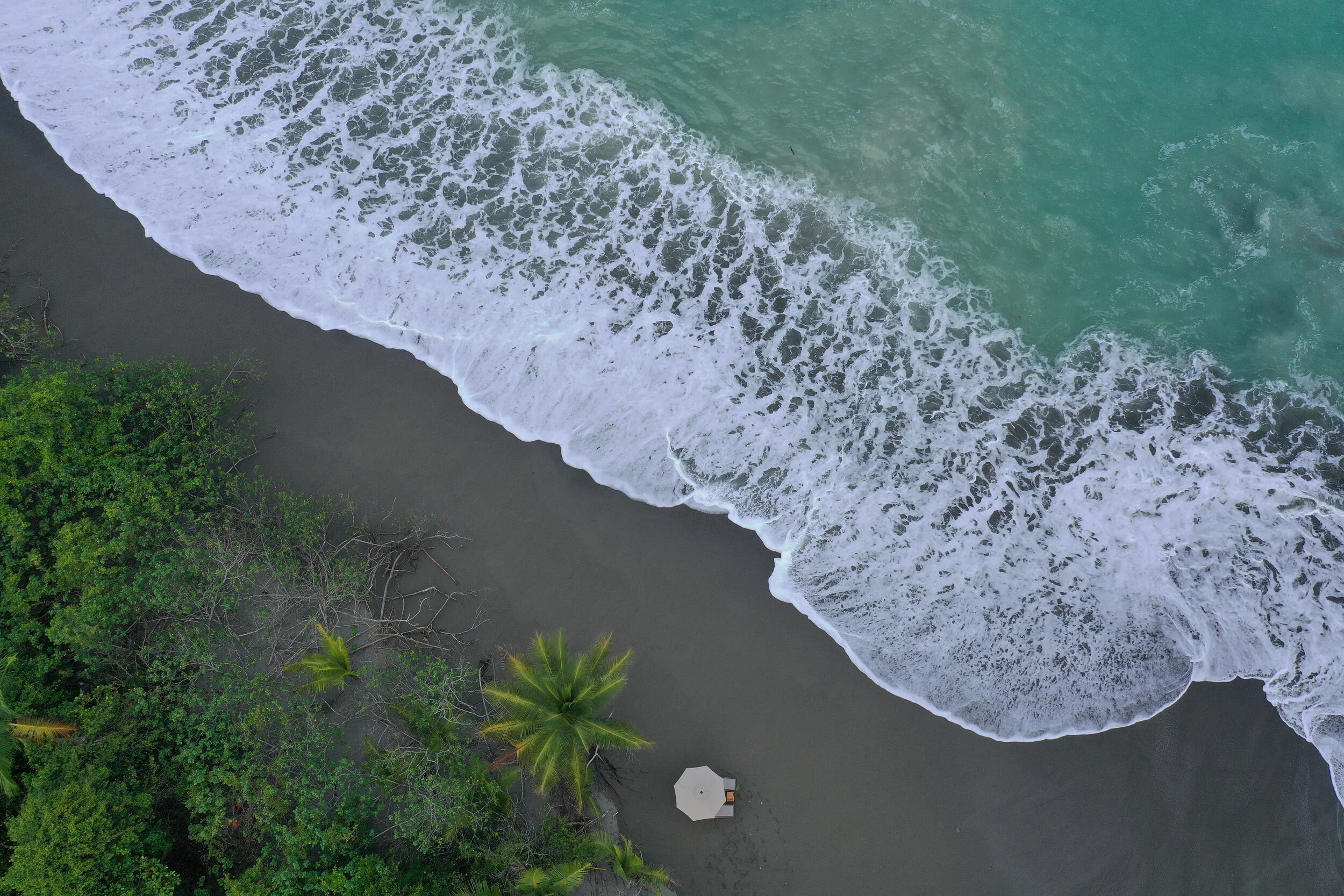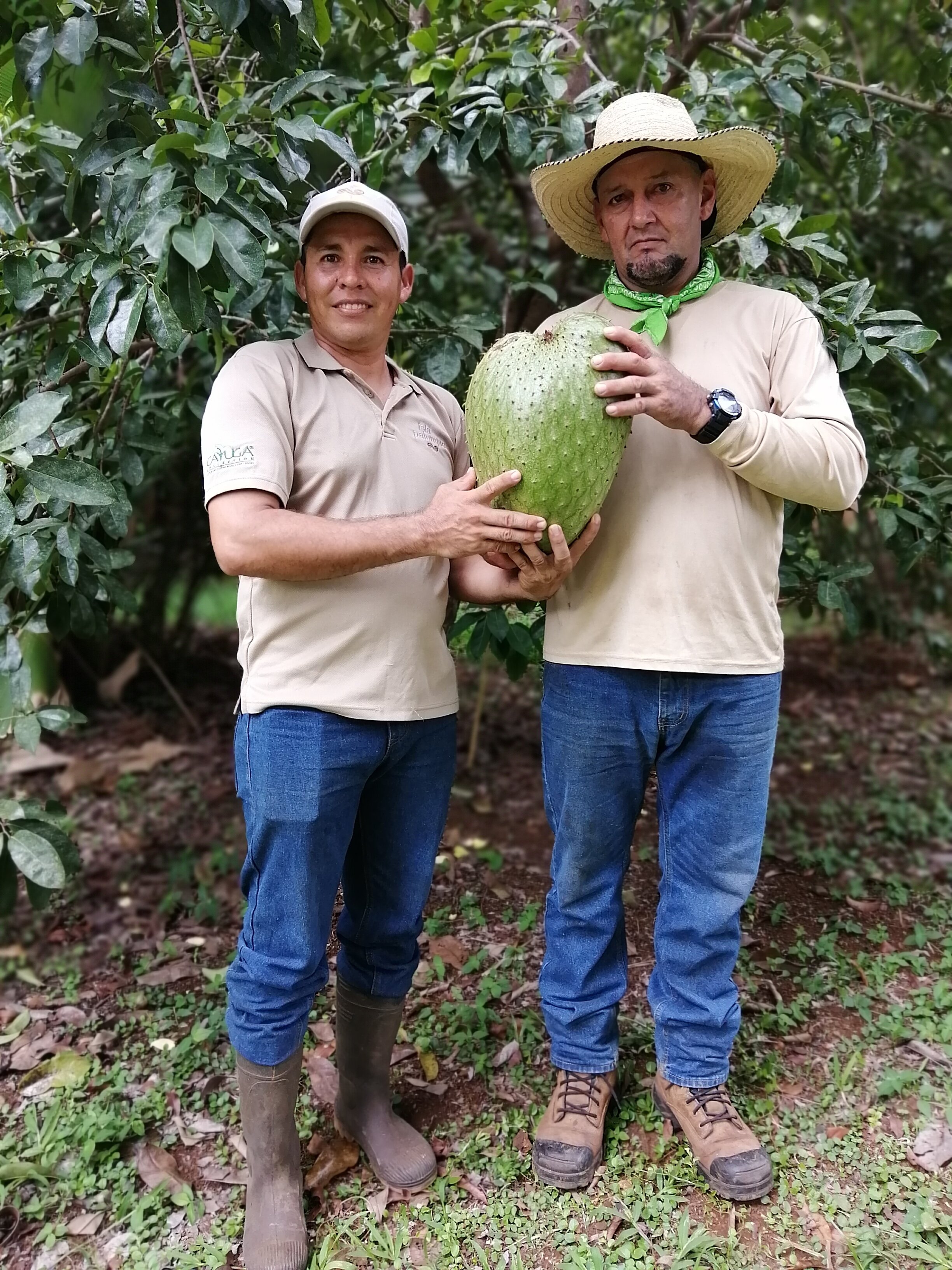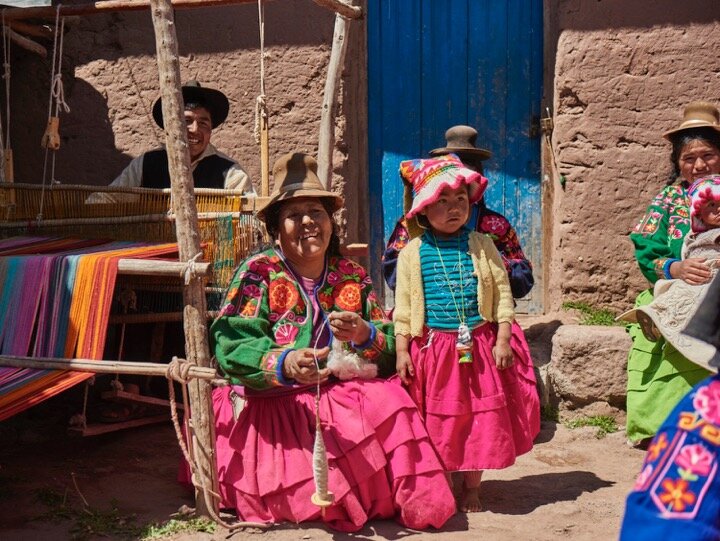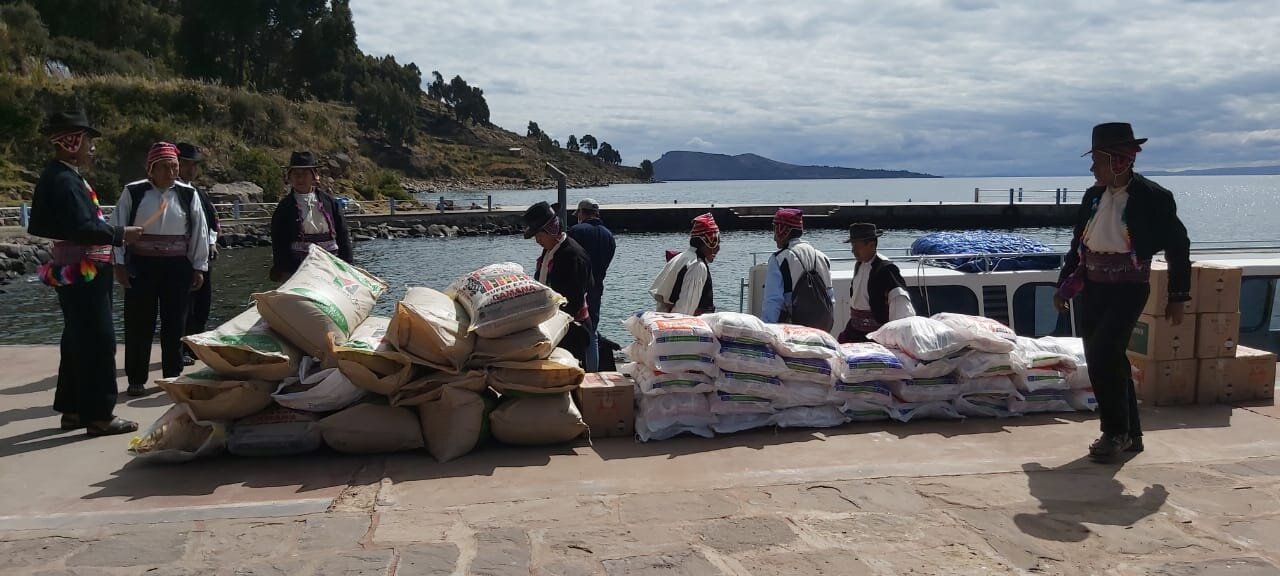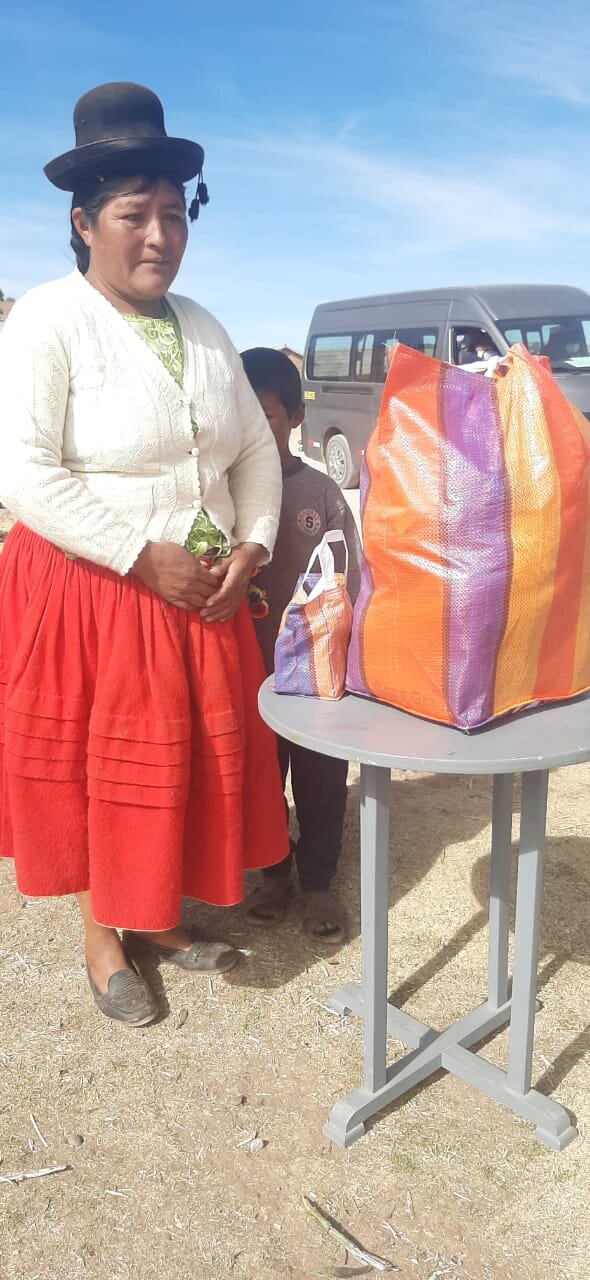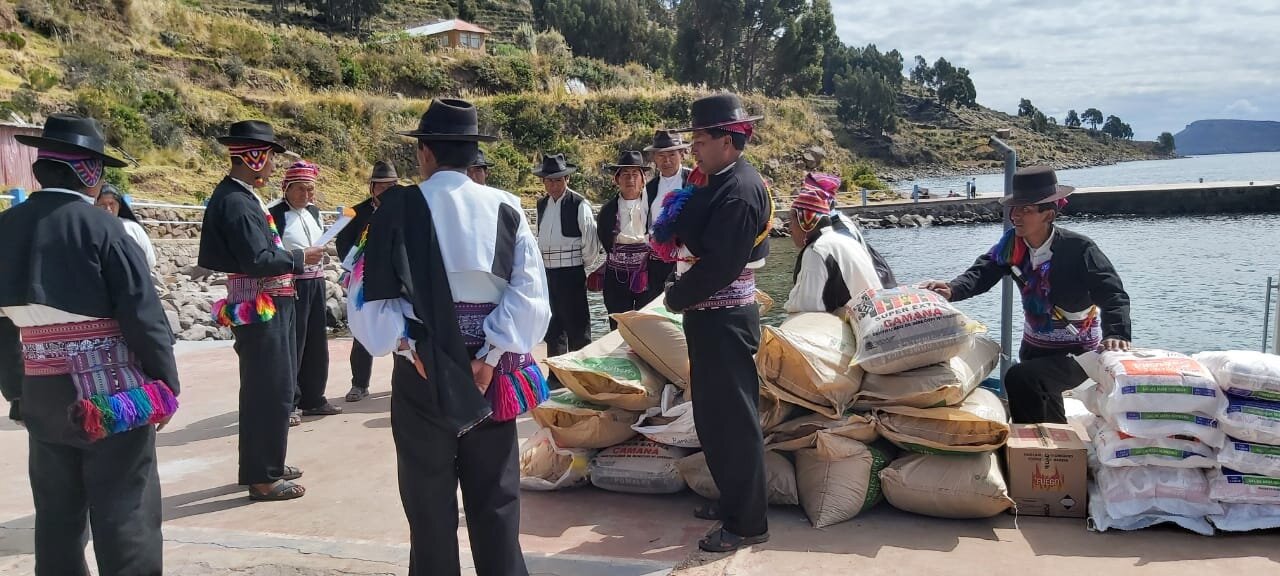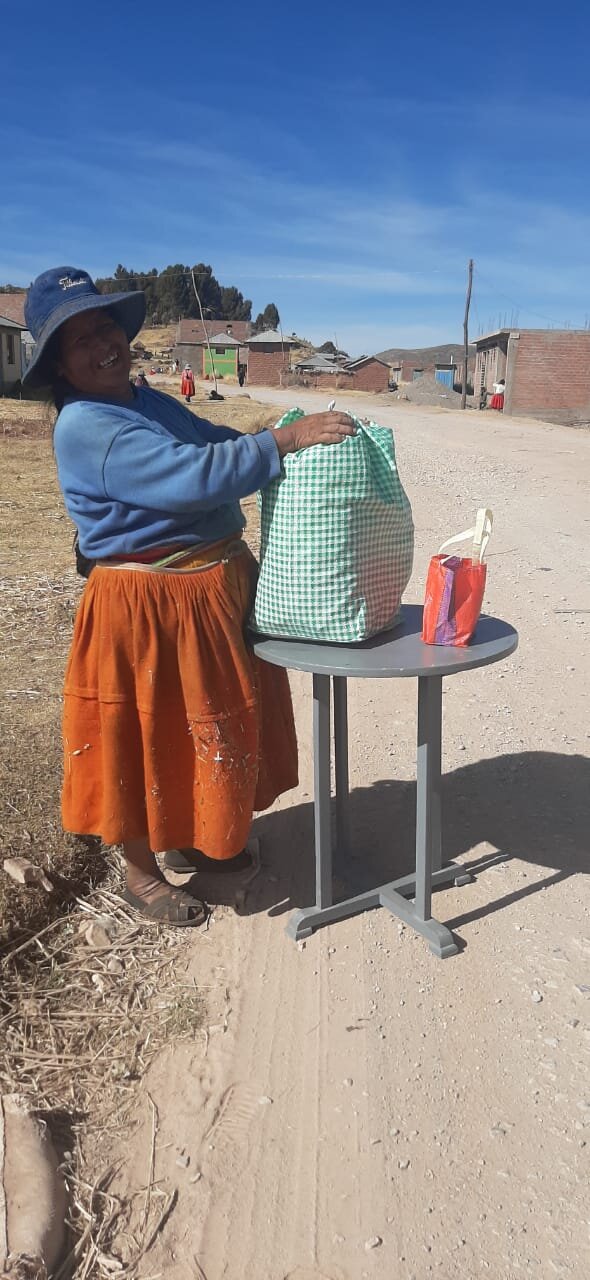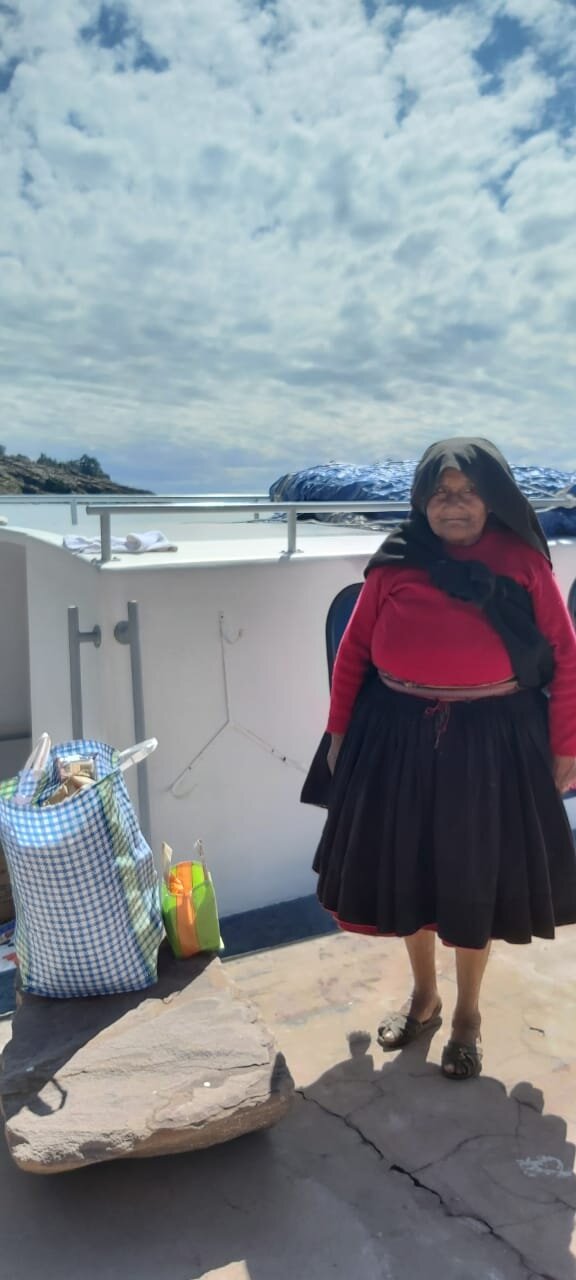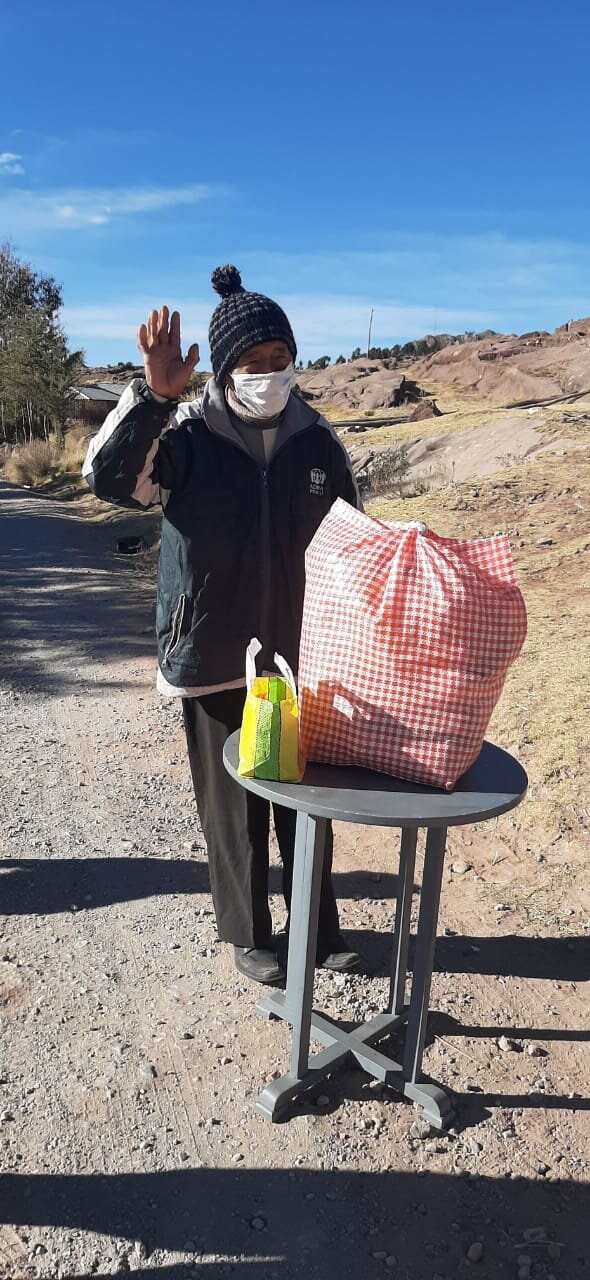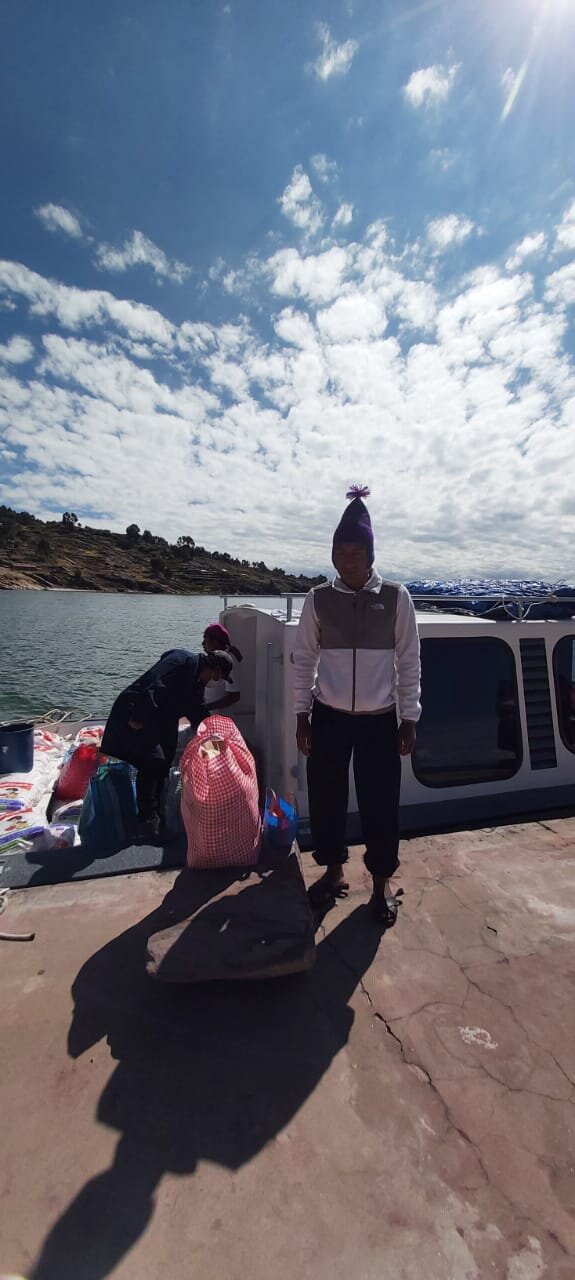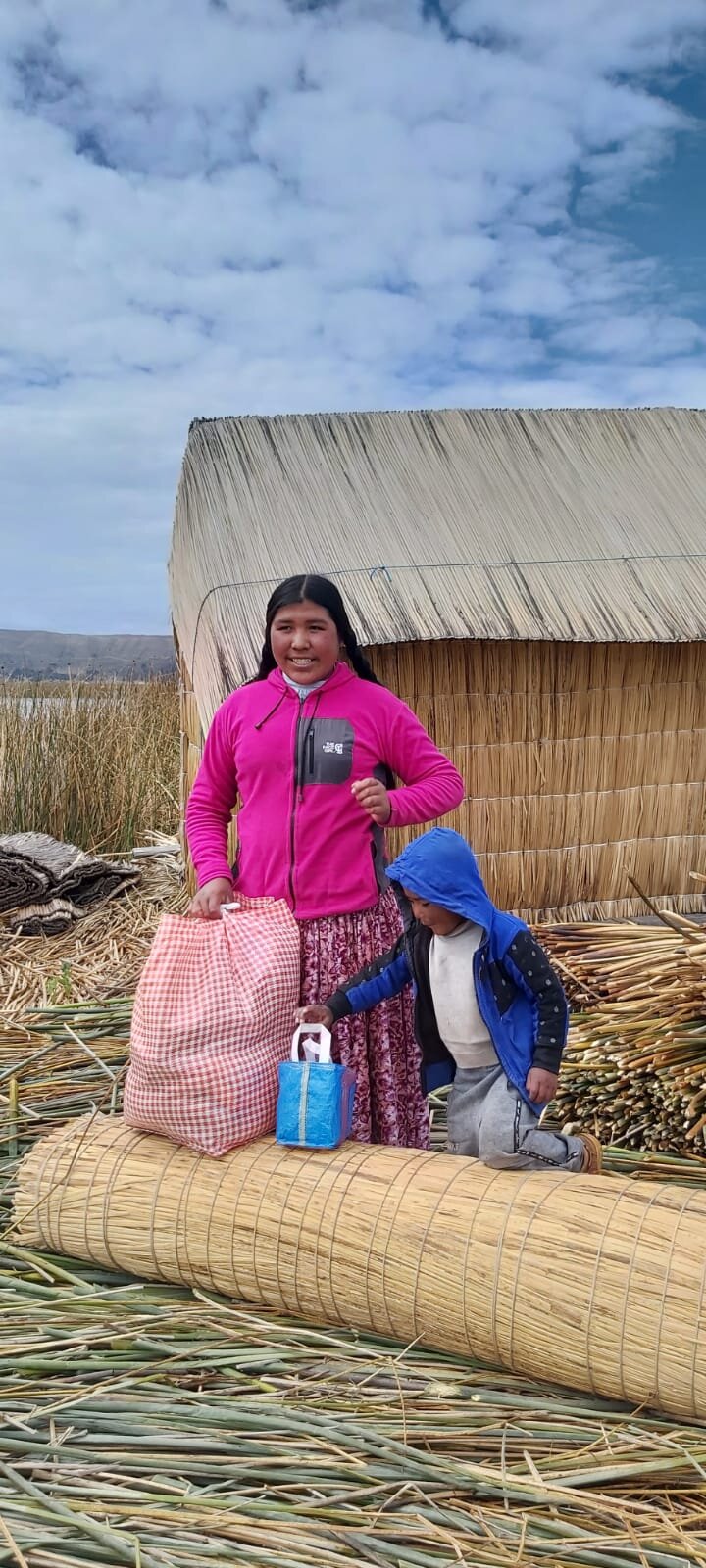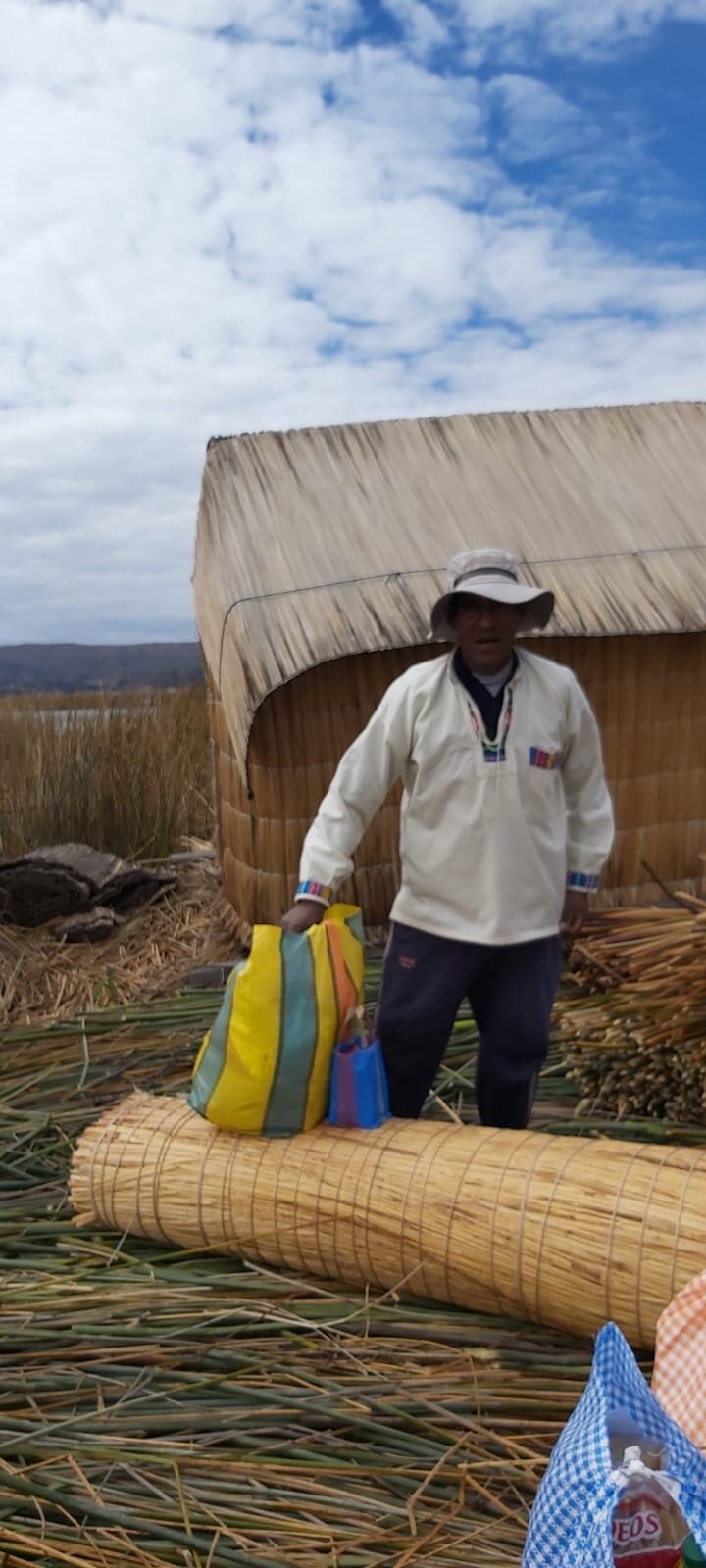Ecuador & Galapagos: Where and How to Travel Now
Whats the current state of travel in Ecuador in October 2020? We share some tips and advice for arranging trips there now.
Ecuador & Galapagos: Where and How to Travel Now
Ecuador was one of the first and hardest hit countries in South America by Coronavirus at the beginning of the pandemic. The terrible months of March and April resulted in some of the most severe lockdown measures of any country on earth, the results of which have continued to trend positive until today, the curve flattened in May and has stayed that way. The US Department of State dropped the travel warning for Ecuador to Level 3: “Reconsider Travel” - one of only 5 countries in South America.
Reality Check: Just to put statistics in perspective, since the majority of readers of this blog will be US based travel industry professionals referencing destinations to pitch to their clients: The entire country of Ecuador with a population of 18 million has recorded 141k total cases of Coronavirus since March 17th - while Los Angeles County, with 11 million inhabitants, has recorded 275k case in the same period. (Ecuador shows a 0.007% infection rate vs LA County at .025%)
Since May, Ecuador has cautiously opened their economy, bit by bit, and by July 1st the hotels which we represent on mainland Ecuador (Casa Gangotena, Mashpi Lodge, Hacienda Zuleta) reopened, but in a limited capacity and only to local Ecuadorian guests as the international borders remained closed. This move however, of allowing the hotels to welcome Ecuadorian guests proved to be great, allowing the hoteliers a limited stream of income, but more importantly, the ability to retain key staff and refine their operations and sanitary protocols over time, in preparation for welcoming international visitors back. They have not gone from zero to sixty overnight, they have been looking after guests safely for three months now, they are running solid operations and their staff are accustomed to the new reality of travel.
On July 1st, Ecuador reopened its borders to international visitors and the frequency of commercial flight routes and frequencies has continued to grow. Currently, as of October 7th, the following list of major airline carriers have multiple direct flights weekly to both Quito (UIO) and Guayaquil (GYE), the principal international gateways.
United from Houston to Quito
American Airlines from Miami to Quito and Guayaquil
JetBlue from New York to Quito and Guayaquil
JetBlue from Fort Lauderdale to Quito
Copa Airlines from Panama City to Quito
AeroMexico from Mexico City to Quito
KLM from Amsterdam to Quito and Guayaquil
AirEuropa from Madrid to Quito
Iberia from Madrid to Quito
So what are the entry requirements? Visitors from any nation are allowed into mainland Ecuador by showing a negative PCR Covid test taken within 10 days of flight arrival (not needed for children under 18). A basic heath questionnaire needs to be filled out and temperature checks are given upon arrival. Once you have satisfied these requirements, you are free to circulate around the 23 provinces of mainland Ecuador. With the variance in how quickly test results are being returned (in the United States) this 10 day window makes it very easy to prepare for departure, and the flights to/from Ecuador have been operating normally.
You notice that I keep referring to “mainland Ecuador”? That is because the #1 tourist attraction in Ecuador is the Galapagos Islands, which are just one of the 24 Provinces of Ecuador, but sit 800 miles off the Pacific Coast - and they have their own separate entry requirements. In order to visit the Galapagos Island, visitors must show a negative PCR test taken within 4 days (96 hours) of arrival in the islands (not needed for children under 12), show proof of travel insurance which includes medical coverage, and a safe-conduct permit from your cruise or tour company.
So all in all, Ecuador and the Galapagos is open. But with mainland Ecuador and the Galapagos being two very different travel experiences, with different requirements, how best to go about organizing a trip there? Below, I’ll break it down for you and provide some ideas, suggestions and things to consider in planning trips there at the moment.
Time to contemplate. Deep in the Mashpi Reserve in the Cloud forest of Ecuador
1) Mainland Ecuador is good to go. The requirements for entry are easy, flights are abundant and stable, and there is so much to see and offer on mainland Ecuador that it is deserving of its own trip, without the Galapagos. Most visitors to Ecuador don’t even spend much time on mainland Ecuador in their rush to the Galapagos and back; but the country has Amazon Rainforest, High Andes, Cloud Forests, Tropical Coast paired with an incredible Cultural and Historical diversity, all easily reached in this small compact country. The visitor experiences that mainland Ecuador offer are naturally socially distanced - this isn’t a destination for museums or group touring, it is about nature, wildlife and open space - enjoyed on private customized itineraries. To give you an example, below is a fantastic 10 day, door to door itinerary, that may interest your clients which includes Casa Gangotena in Quito, Mashpi Lodge in the Cloud Forest and Hacienda Zuleta in the Andes.
*Feel free to save and share this itinerary with your clients, you can replace the logo and contact details with your own in the header and footer. You can have this itinerary quoted by your DMC or Tour Operator of choice, or work with the properties direct. f you need help with this document or how to book, please email me.
2) If you have a couple or family looking to go somewhere to work or school remote for an extended period, there couldn’t be a more ideal place for this than Hacienda Zuleta. The historic Hacienda building dates back to 1619 covers a whopping 150,000 square feet of space, with the most delightful areas to work from tucked throughout the charming hacienda - and rock solid wifi. When work or school is done, you have a 4,000 acre private farm and wildlife conservation area to explore by foot, bike or horseback - and you don’t have to worry about cooking or cleaning! Weekends can be spent exploring other parts of Ecuador. Zuleta has been a home away from home for my family and children for many years, it’s the place they always want to go back to, always feeling at home and well looked after by Fernando and the local Zuleta community. Zuleta is offering up to 35% discounts on stays of a week or more with additional discounts for children. If you have clients interested in this, please email Gabriela at Zuleta, who handles international reservations.
Two women from the community, enjoying some sunshine in the courtyard of Hacienda Zuleta, doing embroidery and catching up on news.
3) Now on to the Galapagos….which is primarily known as a cruising destination. It’s should be easy enough to get clients from your home to the Galapagos within the 96 hour testing window. But make sure you can count on the PCR test turnaround times, calculate the flight connection times from their home to Guayaquil or Quito, calculate an overnight in Quito or Guayaquil prior to the Galapagos flight the next day, and of course factor in some buffer time should there be a flight delay or missed connection. The alternative to this is to have clients enter mainland Ecuador on the 10 day test, arrange another test for them upon arrival and then go stay somewhere for a few nights while they await test results and then fly to the Galapagos. The reality is that there are fewer people coming to the Galapagos right now than to mainland Ecuador due to these more stringent measures and the added logistical complexities of getting to the Galapagos. Add to this the inherent public concern about being on a cruise ship for multiple days in close contact with other passengers and crew, and a greatly reduced number of available flights between Mainland Ecuador and the Galapagos - plus the reality that some (not all) cruise ships, due to lack of demand, are forming pools with other vessels where travelers may end up on a different vessel and itinerary than what they booked, if the occupancy for the ship and itinerary your clients booked is very low. All of these factors understandably combine to make travelers uneasy about booking a Galapagos trip at the moment, the Galapagos is one of those once in a lifetime bucket list trips, and consumers are anxious to shell out for such an expensive trip under such uncertainty. But for the intrepid who want to go now, I couldn’t imagine a better time to be in the Galapagos with so few visitors, and how incredible the wildlife viewing must be since they have been left alone by tourists for six solid months. The experience would be akin to those advisors traveling to Africa at the moment witnessing the great migration all to themselves. My real concern is that since operating in the Galapagos is such an expensive business, and the industry has been decimated since March, there are some tour operators that are willing to do whatever it takes to make bookings right now - they desperately need the income (well, we all do). So combine the inherent group travel nature of the Galapagos, a lack of healthcare capacity in these remote islands, and a small number of reckless players in the industry - the situation is ripe for an outbreak, which if happens now, is only going to damage the Galapagos tourism industry even more (and Ecuador as a whole) through viral press coverage. So be sure to work with established, well run and responsible operators - I sincerely want to encourage people to travel to Ecuador and the Galapagos now, but sensibly.
The Galapagos Safari Camp, remote and private in the highlands of Santa Cruz Island
3) What about the Galapagos Safari Camp which you represent? The Galapagos Safari Camp has always served as an amazing alternative option in the Galapagos for those looking for more a more private and customized Galapagos experience, ideal for those travelers that are not keen on joining a group tour on a cruise ship. The small size of the property, located in a remote portion of the highlands with the luxury tented accommodation and private villa were virtually made with social distancing in mind, before it became part of our global lexicon in 2020. The owners, Michael and Stephanie, are in no rush to open due to the concerns I’ve outlined above - but are offering completely private takeovers of the 3 bedroom family villa on property or the 9 luxury tents. Those groups would have their own private guide and private chartered day yacht vessels to explore the outer islands just with their own group, no mixing with other visitors. During normal times at Galapagos Safari Camp, as an example pre-COVID, we may have 6 different bookings at a time, each doing their own customized itinerary but potentially mixing together for the day yacht excursions to outer islands - as well as having guests that are staying with us post cruise. They are not willing to offer these sort of semi-shared excursions at the moment nor are they accepting guests that are disembarking from cruise ships. So if you have a group or family from 4 up to 16 people in total, we have completely private programs to offer them beginning in November - and on top of that, we have key holiday season dates available. Please email the owner, Stephanie Bonham-Carter directly to receive the details of these programs.
Sundowners at Galapagos Safari Camp, in Private
Please remember that I am here to assist and guide you should you have any inquiries for Ecuador & the Galapagos, just email me. And this website has great tools full of marketing materials, PDFs, Videos, Images and Sample Itineraries.
I will personally be traveling to Ecuador in the next few weeks, and will be producing a daily video blog of the experience to share with you and your clients, of the current reality of traveling there. I’ll send more details on that when my dates are set.
Sending you positive energy-
Clark
Costa Rica: Where & How to Travel Now
Costa Rica is poised to welcome citizens and residents from all of the United States on November 1st after over two months of selectively staggering international tourism and focusing on the domestic market. Find all the latest info on entry requirements, in -country regulations and steps being taken by our partners to welcome your travelers back safely and warmly.
Costa Rica: Where & How to Travel Now
Since closing it’s international borders in March, Costa Rica has effectively controlled the Covid-19 outbreak throughout the country. As of October 3, 2020, Costa Rica - with a population of over 5 million - has 79,182 cases of COVID-19 (10,650 of these are “Por Nexo” which is a way of counting everyone in a household that has a confirmed Covid case as having the virus, though this is done without a test) and 950 fatalities.
Domestic tourism with regulations has been permitted in the country since June and Costa Rica has taken smart strategic measures to encourage residents to explore their own country. (For example, all national holidays in 2020 and 2021 were moved to Mondays so that Costa Ricans can enjoy long weekends to travel around the country and extend their stays.) And our hotel partners have all been open and welcoming the high-end local market, which has allowed them to dial in the new protocols, streamline operations within current restrictions, and most importantly, the hotels have had a vital revenue stream over the past several months, enabling most of them to increase their payroll & hiring by 50% since June.
Says Hans Pfister, Co-Founder & President of the Cayuga Collection “It’s very, very hard to go from 0 to 100 or even 0 to 75 overnight. Hotels that have stayed closed must hire and retrain staff, ensure everyone understands and follows the new protocols and figure out their own supply chains and what is possible. You can have a plan, but you can’t really determine how well it works until you can apply it in real time. For the Cayuga Collection Hotels, being open and catering to the high end local market for months now has given us plenty of time to “practice” in a way, ensuring we are 100% ready for the return of international guests. Our hotel teams are also excited and motivated, seeing their hard work and dedication over these difficult months pay off.”
Part of this dedication is because the hotels which Clark and I partner with throughout Latin America are owned by individuals as opposed to boards of investors, and in this case, 4 out of the 5 hotels that we represent in Costa Rica are owned by local Tico families - they are passion projects born out of love of place as much as they are businesses. People travel for different reasons but this is something for advisors to consider when discussing Costa Rica travel plans with your clients - suggesting hotels that have been open, supporting the local economy and doing things right for months vs. those that have been closed and don’t plan to reopen until mid November or festive.
Morning set up at Hotel Aguas Claras
Now for all of the details.
Who Can Visit Costa Rica: As of November 1st, all United States Citizens can enter Costa Rica for tourism purposes.
Costa Rica is also currently open to all citizens and residents of Canada, Mexico, the UK, the EU Schengen Zone, Australia, New Zealand, Uruguay, Jamaica, Japan, South Korea, Thailand, Singapore, and the People’s Republic of China.
Requirements for Entry: All travelers arriving in Costa Rica must present the following:
Prior to departing the US, complete the online Health Pass Form. Each passenger must answer this health pass individually and after the completion of the health pass, they will receive a QR and alphanumeric code that they must carry on their mobile or printed on paper to present to authorities at the airport.
Travel Insurance that guarantees coverage of at least $50,000 USD in medical expenses in the event of becoming ill with COVID-19 while in Costa Rica AND a minimum of USD $2,000 for lodging expenses required as a result of contracting the virus (trip interruption insurance to cover quarantine expenses) Travelers should ask their insurance company to issue a certificate stating these coverages. Policies vary and everyone needs to do their own due diligence.
Travelers may also opt to purchase insurance through Sagicor, a Costa Rican company that offers policies in accordance with the government mandates. This can easily be done online here: Tienda Sagicor Sagicor also has a desk in the San Jose International Airport where they will examine traveler’s insurance policies on arrival and if 1.) the policy doesn’t meet the requirements they can sell them coverage that does or 2.) issue the necessary certificate that verifies the the coverage offered by an international policy meets the governments requirements.
Gurpo INS, the International Insurance Company in Costa Rica also offers coverage but the interface on their website is terrible and hard to navigate. We can’t recommend that anyone attempt it!
While the insurance bit may pose a slight inconvenience, it’s important to assure your clients that they will not be barred from entry into the country if they somehow purchased the wrong insurance at home as long as they obtain the additional necessary coverage on arrival.
Costa Rica no longer requires any Covid testing as a condition for entry.
More information can also be found on Visit Costa Rica
International Flights: Right now there are a handful of direct nonstop flights to San Jose International Airport from the following USA airports. Schedules are much better if you are on the East Coast as all of the West Coast must currently fly through Houston.
Newark: United Departs EWR daily at 7:15 am and arrives in San Jose at 10:30 am. Gotta love a flight that aligns well with hotel check-in times! You can be on your way to the beach and enjoy a late lunch surf side by 2:00 pm.
Miami: Two nonstops per day on American Airlines, a morning and evening option, both have you in San Jose in about 2 hours, 30 minutes. (Also, when I checked for this blog post, roundtrip tickets in Standard Economy were $230 each for flights during the second half of October.)
Houston: One flight daily on United, departing IAH at 9:37 am and arriving SJO at 12:25 pm.
Delta, Alaska, Southwest and JetBlue have yet to resume their service to Costa Rica, and we don’t talk about Sp*r*t. But there are rumors that the first four airlines will begin direct service from Atlanta, Dallas, Boston and Fort Lauderdale at the end of October or early November. United also plans to restart direct flights to San Jose from Denver next month.
Domestic Flights: SANSA, the national domestic carrier in Costa Rica hasn’t resumed full service yet due to a lack of demand. The fleet of 12 Cessna Grand Caravans is fully operational so we expect more domestic flights to become available as passenger load increases over high season. But for the time being, they are not entirely reliable and scheduled departures are frequently cancelled or rolled into a single option.
So How Do You Get Around Costa Rica?: In the absence of regularly scheduled, reliable commercial flights to more out of the way destinations (think Osa & Nicoya Peninsula, the Caribbean Coast) private charter flights are a great option, especially for family or friend groups of 4 or more. We’ve always championed private aviation in Costa Rica - it make zipping from the Pacific to the Caribbean side of the country a breeze (compared to an all-day driving adventure on windy mountain roads) and the terrain you fly above is BEAUTIFUL - Napali Coast-like undulating rainforest covered hills rising from the sea to the cloud forests to the Continental Divide. Not to mention it keeps your social bubble intact, preserves your valuable vacation time and eliminates the need to connect via San Jose, as is often the case with Sansa when attempting to fly from Puerto Jimenez to La Fortuna for example.
Some of our partners, like Kurà, offer access to a private helipad and for a couples retreat, this is the perfect & fun arrival option for two, either when traveling to Kurà from San Jose or when connecting from elsewhere in the country.
Lapa Rios has made it easy and done the work for you, offering their Epic Private Adventure that combines sister properties Pacuare Lodge & Lapa Rios Lodge into one seamless trip, including private charter flights between Siquirres (the take out point after rafting out from Pacuare Lodge) and Puerto Jimenez/Puerto Jimenez & San Jose. Private transfers and dedicated guides at each property are also included. Rates start at $6,683 per person, double occupancy in a River View Suite (Pacuare) and a Deluxe Bungalow (Lapa Rios.) Contact Greivin Alvaraz at greivin@laparios.com for more information.
Social distancing happens naturally at Lapa Rios. Refreshed Deluxe Bungalows are surrounded with lush greenery & uninhibited wildlife.
For travelers who want the expert planning guidance of an advisor but are more DIY on the ground, renting a car and driving Costa Rica’s roads is great fun and a very affordable way to get around, especially if you are hauling surf boards and want the to explore less accessible spots. Just get a little SUV with 4WD, make sure you have WAZE downloaded (and a data plan that allows you to use navigation while driving) and go. Hans Pfister shares that there are “some driving restrictions in place to ensure that people aren’t gathering late for parties, but they apply to the hours from 10 pm to 5 am and don’t affect our guests.”
For families with young kids and first time travelers to Costa Rica, we love this 7-night MONTEVERDE & MANUEL ANTONIO itinerary, which can be done via a rental car or with a private transfers arranged by the hotels, Senda Monteverde & Arenas Del Mar. Oh, and we are very excited that the road to Monteverde is now 100% paved! No more “Tico Massage” for the last 20 km! It makes Monteverde a quick and smooth 2 hour drive from San Jose and more accessible than it was previously.
Regulations in Country: As mentioned previously, hotels in Costa Rica have been allowed to operate at limited capacity since June and all of our partners have been open for several months now and are pros of travel in the era of Covid. You can check out the specific policy of each property on our Covid-19 Updates page.
While all hotel amenities (restaurants, guided excursions, beach clubs, pools, wellness centers) are open & available for guest use at our partner hotels, some have been adapted to accommodate social distancing, private experiences and more frequent deep cleanings.
Costa Rica requires that face coverings be worn in enclosed spaces, on public transportation, and when a distance of three meters cannot be maintained between people.
National Parks are open though entries are limited to control crowding & group sizes are limited. Most of our partners are only offering private excursions at this time. For something like Corcovado National Park which is an easy day trip from Lapa Rios, make sure to request this at the time of booking so entry is secured.
Beaches are “officially” open from 5:00 am until 2:30 pm, but as Hans shares in his blog “what it’s like to travel in Costa Rica right now” this rule is largely meant to prevent large parties and gatherings from occurring. While Da Lime beach club at Hotel Aguas Claras and Playitas Beach Club at Arenas Del Mar must stop their beachfront service at 2:30 pm, guests can still enjoy drinks and food at the physical restaurants until normal closing hours. And if you decide to take your cocktail for a sunset walk in the surf, no one is going to bother you.
OCT 8 UPDATE: Restricted beach hours ended on October 15.
Waves and sand basically all to yourself at Arenas Del Mar
What’s With the Travel Warning?: Costa Rica’s well-intentioned attempt to encourage some accountability by US governments by only permitting tourism from States with low infection rates has ultimately led to the USA maintaining a Level 4 travel warning against Costa Rica while dropping it for neighboring countries (Like Nicaragua) which impose no restrictions against US travelers. It’s petty, bureaucratic nonsense and we expect the travel warning to drop once borders reopen to all American travelers.
I have yet to travel to Costa Rica - in fact this coming weekend will be my first flight since March - a trip to see my parents in Pittsburgh and then husband’s grandparents in Naples, FL for some long-overdue & precious family time. Travel right now is a personal choice, but for me, after East Coast family visits, I’ll be making plans to head to Costa Rica and Panama in early November to champion our industry partners and friends and share the experience with all of you! Reach out via email if you have any questions at all - I’m happy to help and excited to feel the buzz of energy in our part of the industry again.
Kirsten
Renewable Energy, Conservation & Community Enrichment: Lapa Rios Looks to the Future
Lapa Rios looks to the future of ecotourism with renewable energy upgrades and a Conservation Fee dedicated to supporting education and research on the Osa Peninsula
Renewable Energy, Conservation & Community Enrichment: Lapa Rios Looks to the Future
Lapa Rios is a Costa Rican-owned luxury rainforest lodge and 1,000 acre conservation easement on the Osa Peninsula with a long legacy of environmental protection and community partnership. Recently they enhanced their already considerable sustainability initiatives, upgrading their technology to allow 100% reliance on renewable resources and finding new ways to combine economic initiatives for the local community with protection of the Osa’s rich wilderness. Despite the disruption in international travel, Lapa Rios’ mission remains to offer travelers and adventure seekers the opportunity to experience Costa Rica’s most stunningly beautiful natural places through a lodge concept that is truly luxurious, immersive and driven by conservation.
Rainforest meets wild beaches at Lapa Rios on the Osa Peninsula
Sustainability is a core value of Lapa Rios. The property has been single-use plastic free for nearly two decades, uses biodegradable & environmentally friendly cleaning products, provides a critical protected corridor for wildlife within its 1,000 acre private rainforest reserve and carefully sources food from local producers & fishermen. Recently the property converted to 100% reliance on renewable sources of energy, utilizing a powerful system of solar panels and nano turbines to collect solar and hydro energy to power the entire lodge. This was based on the hydro-power systems already in use at Lapa Rios’ sister property, Pacuare Lodge.
Alongside these sustainable energy property-wide upgrades were extensive room renovations. In addition to six stunning brand new villas - all with luxurious, modern interior design but low-impact construction - Lapa has revamped the existing Deluxe Bungalows, adding high power, energy efficient ceiling fans and low-flow toilets to conserve water. Far from the closest public utility, water at Lapa Rios comes from a natural spring on the property, which is filtered on-site and safe for guest consumption. Guests are given refillable, stainless steel water bottles to use during their stay.
Immerse yourselves in the lush rainforest canopy at Lapa Rios.
Lapa Rios also recently initiated a Conservation Fee for all guests in order to expedite further environmental efforts within Corcovado National Park. The fee is $25 per guest per stay and 100% goes towards different projects that Lapa Rios is helping to pioneer and launch throughout the Osa Peninsula. Projects include hiring two full time administrative staff for Corcovado National Park (allowing the spread-thin park rangers to focus on patrolling and visitor education), funding environmental education for children throughout the Osa Peninsula, building a research lab station for university students to study rainforest biodiversity, rebuilding the local waste collection and recycling centers in Puerto Jimenez and further surveying surrounding national parks and nature reserves with infrared cameras to monitor wildlife and help protect the environment from illegal poaching, mining and logging. Lapa Rios also worked with the local community tourism collective in Puerto Jimenez to purchase a new, state of the art boat to provide rapid transit directly from Lapa Rios to Corcovado National Park. What was once an arduous all-day car journey is now a 90 minute scenic boat trip in each direction. By eliminating some of the logistical challenges and promoting intelligent and sensitive travel to Corcovado National Park, Lapa Rios is helping to protect the “jewel of the Osa” while simultaneously benefiting the local community with employment that is rooted in preservation as opposed to extraction.
Some of these initiatives have been on hold during the global pandemic, but as tourism begins to open up again, Lapa Rios will continue to push forward in sustainably developing their property, expanding their conservation easement and further engaging with the local community. With a legacy of pioneering the ecotourism movement in Costa Rica, these new initiatives at Lapa Rios ensure that the property remains a leader in conscious, conservation minded travel, which we hope becomes the new normal in the future.
This blog was written by Olivia Winck, daughter of respected Travel Advisor Leah Winck, owner of Journey On Travel. Olivia is a rising junior at the University of California, Berkeley, studying environmental sustainability in the realm of hospitality in hopes to pursue a career in ecotourism. She is planning on furthering her knowledge in sustainability this spring while studying abroad in Hobart, Tasmania. With travel in her heart, Olivia is passionate about seeing the world and ensuring ways to protect it.
Olivia’s Instagram: @oliviawinck
Olivia’s LinkedIn Page
An Identity Crisis at Isla Palenque
At Isla Palenque, staff have used the period of border closures to swap roles and develop new skills. And some have even discovered new passions for birding and farming!
An Identity Crisis at Isla Palenque
The absence of guests on Isla Palenque has caused an identity crisis among the team, leading to some career changes. Chefs have departed the kitchen to become birders, managers have moonlighted as English teachers, naturalist guides have developed an interest in farming & the head of HR has moonlighted as a photojournalist. Is this a case of island fever? Just what exactly is going on behind the scenes while Panama’s borders are closed?
Chef Jean Discovers a Love for Birding
Chef Jean (foreground) birding with Isla Palenque head naturalist guide, Chava.
You never know when a new passion might take hold of you. Jean is Isla Palenque’s talented chef who uses the plate as his artist’s canvas. He’s an early riser by nature, but without the need to be in the kitchen to oversee breakfast for Isla Palenque’s guests, Jean has used the morning hours to join the resort’s naturalist guides on their birding walks. His intuitive eye for detail has drawn him to the hobby, focusing on the variations in shapes, color, appearance and calls that distinguish the 55 (and counting) bird species that make their home on or near Isla Palenque. The change in seasons has also brought a number of migratory birds to the island - where they’ll pause for a few days before continuing their trip - adding another layer of intrigue to the identification process. Isla Palenque regularly offers daily birding tours at sunrise and sunset, at various points around the island to expose guests to the variety of birds that inhabit the various ecosystems, from dry tropical forests to wetlands to palm forests & coast. Perhaps one day the birding guide ensuring that you spot the Lineated Woodpecker will be the same individual serving you a perfect tropical curtido for lunch - Chef Jean!
English Lessons for Staff
While all front of the house staff at Isla Palenque are multilingual and fluent in English, many members of the grounds crew and maintenance team don’t feel comfortable or confident enough to interact with English-speaking guests. At the onset of the border closure, several team members approached management about using this time to improve their English communication skills. Isla Palenque’s GM, Patricia, and Chava, head naturalist guide have organized free & voluntary conversational English classes for all island staff, with the support of Cayuga’s Sustainability Program & Career Ladder. Classes are held twice a week on Tuesdays & Thursdays and response from attendees and teachers alike has been full of enthusiasm. To date, several students have maintained perfect attendance.
Peppers ready to be picked
Hyper Local Farm to Table
It’s been a goal since Isla Palenque’s inception to have a garden, small farm and greenhouse on the island capable of fulfilling the food needs for guests and staff alike. This is not only to reduce the number of weekly trips to markets in the Chiriqui Highlands but to offer guests more hands-on culinary experiences and ensure that our menu centers on food that has been organically & sustainably cultivated every step of the way.
Farmer Chava and his chickens
But like every gardener knows, it takes time and careful observation of the natural world to understand what coaxes the most abundance out of a particular patch of dirt. The team at Isla Palenque spent two years testing the soil with various organic additives and fertilizers & identifying the beneficial relationships of certain native tropical plants with domesticated fruits and vegetables. Today, the island’s garden is 100% organic and more fruitful than ever. The garden, greenhouse and flock of chickens (32 laying hens and 23 “Broilers”) are the pride and joy of the entire staff and two dedicated gardeners, Lolito and Eveilo. Chava, Isla Palenque’s lead naturalist guide, has also taken a keen interest in the garden and farm activities and always lends a hand with the daily chores. While most of what is cultivated will end up on the menu once guests return to the island, currently Isla Palenque is spreading the abundance around and ensuring that all staff and many local families in Boca Chica receive regular food deliveries of fruit, vegetables and eggs.
Lolito, Eveilo and a giant Guanàbana, which later became ice cream
Some of the fun culinary creations the staff have enjoyed and learned how to prepare recently include farm-to-table pizza and Guanàbana (Soursop) ice cream, which features a tropical fruit that grows wild on the island. When guests come back to Isla Palenque, they’ll be able to visit the “Granjita” on the Sustainability Tour and pick their own produce and eggs for culinary activities with the Chef.
Photojournalism 101
The photos featured here are all from Chava and Xavier (Isla Palenque HR Director), who participated in the Cuenta Cuentos Workshop arranged by The Cayuga Collection. Cuenta Cuentos means “story teller” in Spanish. All interested staff members from each Cayuga hotel were invited to attend a series of online workshops, hosted by Coffee Abroad, in which participants learned how to capture better photos with their cell phones and develop an eye for everyday scenes that tell an interesting story and convey the human aspect of hospitality that we’re all sorely missing right now. And while a screen won’t ever replace the warmth of a genuine smile or a personal conversation on the beach while sun sets (interactions that come naturally to these hospitality professionals), the social media & marketing skills introduced in these workshops may eventually lead someone to a different career! It’s all about planting that first seed of possibility, introducing new ideas and experiences and encouraging individuals to explore their potential.
Some of Isla Palenque’s core team. From L to R, Xavier (HR), Patricia (GM), Jean (Executive Chef) and Chava (Lead Naturalist Guide).
A National Geographic Unique Lodge of the World, Isla Palenque is part of the Cayuga Collection’s larger family of sustainable luxury hotels and lodges in Costa Rica, Panama and Nicaragua. At Cayuga the opportunity for local staff to grow in their careers and develop both professionally and personally is part of the company’s DNA. Cayuga’s commitment to their people - and steadfast belief that all team members with great attitudes and enthusiasm can be taught the skills to aspire to the highest levels of hospitality and beyond - isn’t just a marketing slogan. They live this mission every day through programs both large and small that enrich the lives of their staff and the communities surrounding their hotels and lodges. In 2018 the World Travel & Tourism Council recognized their efforts with the prestigious Tourism for Tomorrow Award in the People Category.
Please visit our travel industry page, Isla Palenque, for more information on this 400 acre tropical island escape in Panama.
Awasi: Setting the Table for Reopening
What have the staff at Awasi been up to during the pandemic? Setting the table for a spectacular reopening.
Awasi: Setting the Table for Reopening
Everyone who works in the travel and hospitality industry has been in a constant state of flux since March 2020. We find ourselves faced with a situation we don’t have immediate control over, the desire to get back to work in delivering outstanding experiences to international travelers. Until the borders are open and flights resume again, all we have is time on our hands. How have the top properties in Latin America been using this time besides fine tuning “health and safety protocols” which is just a given at this point, for every player in worldwide tourism and hospitality, and frankly should have been a matter of major importance even before this global pandemic.
Tomas and Chris - Guides at Awasi Patagonia
I wanted to share an inspiring story about some things that Awasi has been doing.
Awasi has made it a priority to retain all of their staff for as long as financially possible. No amount of beautiful hotel infrastructure is ever going to replace the talent and special energy brought by the hard working people behind the experience. You take away the people, you take away the soul of a property. So what do you do with such a large staff during such slow times? You take the opportunity to make them even better.
There is nothing more motivating than seeing and hearing an individual talking passionately about what they love to do. We seldom get a chance to really take a peek behind the scenes into professions that differ from our own. But running a top tier luxury hotel draws on so many diverse talents, and they all must come together perfectly, in order to deliver a seamless guest experience.
In that spirit, “Awasi Talks - For and By Us”, was created as an internal exercise to share knowledge between different sectors of staff and build company cohesion. The idea was simple enough, allow staff members from the three different geographic properties in the Atacama, Patagonia and Iguazu Falls - working in different sections of the hotel operation, to create and carry out a presentation for the whole company, via zoom. This was not mandatory, but put out there to staff if they wanted to share. The topics turned out to be fascinating, here are just a few of them that have already been completed:
“History of the Jesuit Missions” - by guide, Jimmy McCormick
“A Cup, A Story” - by sommelier, Dana Cordoba
“How to Make Churros” - by pastry chef, Valentina Marambio
“Electrical Installation” - by maintenance staff, Nicolas Arman
“How to Speak in Public” - by excursion manager, Paula Bertotto
“Excursions We Offer” - by excursion manager, Tomas Navarette
Nicolas Arman, maintenance at Awasi Iguazu, presenting on electrical installation.
The Awasi Talks have been a fantastic way for employees of Awasi to get to know one another on a personal level, and for each to deeply understand the small part they play in the big picture. The Chef and Sommelier probably don’t think much about what the guests and the guides are doing out on excursions every day, but after learning how strenuous certain excursions may be, it could just make them think about throwing in a few extra energy bars or picking a wine warmer on the palate for the picnic supplies when they know Tomas is hiking to the Base of the Towers with his guests today - and likewise, Diego might be more on top of his time management when he knows that the Chef has prepared a special asado for the guests that will begin promptly at 7pm. This creates a cross pollination of awareness and appreciation for the team and the role everyone plays in it. How great is it that the head of maintenance offered to do a presentation on electrical installations?! Again, every single part of the hotel operation has to be seamless, and these Awasi talks have allowed for the staff to deeply understand and appreciate this fact.
Matias de Cristobal, Managing Director
These talks have been capped by leadership webinars for all staff by Matias de Cristobal, Managing Director of Awasi on “The Awasi Concept” - exposing all staff to the concept and methodology behind what Awasi does and how Awasi does hospitality and tourism differently. My favorite analogy that Matias uses to describe the Awasi Concept is a round table, sitting outside in a natural setting - on which the guest experience sits. The natural setting, i.e The Atacama, Patagonia and Iguazu Falls cannot be improved upon and were carefully selected as a place to set down that table. However, that table, which holds up the guest experience, is only supported by three legs. Those three legs are; 1) The Physical Hotel 2) The Excursions 3) The Gastronomy. If any one of those three legs is shorter or not as strong as the other ones, the table will wobble and not be solid. The Awasi Talks play right into this analogy, the role of every employee at Awasi is vital in keeping their leg of the table strong, so the guest experience is phenomenal.
The Awasi table is set, the legs are stronger than ever, and we look forward to inviting you to pull up a chair to it very soon.
Explore the Awasi Properties:
Awasi Atacama Travel Trade Page
Senda Monteverde Reopens For Local Travelers
What will the future of travel look like? Senda Monteverde in Costa Rica offers a glimpse, with sold-out weekends (at mandatory 50% occupancy), updated health & safety measures and the warmth, personalization and care that travelers and hospitality fans have been sorely missing!
Senda Monteverde Reopens For Local Travelers
Over the past few months, you’ve probably attended more zoom meetings than you can count where the topics “What will the future of travel look like?” and “Will people want to travel?” have been discussed and debated ad nauseam. We’re happy to share that the time for crystal-ball gazing is over, at least for Costa Rica. Always a leader in the region, Costa Rica became one of the first countries in Latin America to successfully reopen to domestic tourism and is poised to begin welcoming international visitors on July 1.
Plastic visors, social distancing, QR codes for menus but the same friendly service + healthy, organic & delicious choices. Welcome to the future of dining at El Sapo, Senda Monteverde’s Restaurant.
Senda Monteverde, the Cayuga Collection’s cozy mountain lodge tucked up in the Cloud Forest, opened on June 5th to welcome local travelers for much-needed weekend getaways. While certain restrictions remain (hotels & restaurants may only operate at 50% only parks & reserves require advanced reservations due to limited capacity), Senda Monteverde has sold-out every weekend since opening and guests have been raving, both about the changes but also about the refreshing & prevailing sense of normalcy. Check out The Cayuga Way Blog for a recent guest review from the Hammond Family, architects & Costa Rican residents who stayed at Senda Monteverde over opening weekend. After three months of home schooling and WFH, a weekend walk in the Cloud Forest was just what everyone needed.
Lake Titicaca Communities Support Fund
Lake Titicaca Communities Support Fund
When things are difficult for you, it often opens doors in which to reflect on your situation, and realize that others may be in a more difficult situation than you.
The Coronavirus pandemic has caused the global tourism and hospitality industry to grind to a halt. Those that work in the industry have seen their business go from 100 to Zero in the span of a few weeks, no new bookings are coming in, only cancellations and postponements. From hotel owner to tour operator to guide to airline steward to travel agent, we are facing challenging times with no clear end in sight. But we are directly involved in the industry. What about those that are indirectly involved in the industry?
What lures people to travel to far off lands is not just fancy hotels and exotic landscapes, it is the people they meet along the way that don’t directly work in tourism, but make the tourism experience so magical. We are all human after all and share in that primordial connection, that as different as we may appear on the outside, inside we are all the same.
It was in that spirit that Titilaka Lodge on Lake Titicaca decided to launch the Lake Titicaca Communities Support Fund. The indigenous communities that surround Titilaka are an essential part of what makes the guest experience so special and unique in the world. These communities have been part of the hotel’s extended family for many years and they have touched the lives of visitors from all corners of the globe. Although not directly involved in tourism, a large part of their local economy is driven by tourism money coming in. No tourism has meant a drastic decline in their local economy.
The Lake Titicaca Communities Support Fund is a fundraiser to supply basic food items and virus-protective supplies to 150 families in the four communities surrounding Titilaka Lodge. The goal is to collect 31,500 USD. This amount will provide a basic food basket for one month and a virus-protective supply kit per family.
Since launching one month ago, we have received 60 donations, from as small as $5 to as large as $2000, from people all over the world who have been touched by the communities of Lake Titicaca before and want to share some love. We have only reached 1/3 of our goal but are already making good on the promise to deliver these baskets to as many families as we can. I wanted to share some images of the first round of donations being delivered.
We still have more families to reach, so if you feel like you can spare $5 or more, we appreciate your support and you can donate and leave a message on our GoFundMe page.
A Message From Clark Kotula and Webinar Schedule
A message about COVID-19 from Clark Kotula and our webinar series invitation.
A Message from Clark Kotula and
May Webinar Schedule
I remember the last real hug I received from a stranger, it was March 12th around 8:30pm while at a travel industry event in Montreal. She was a Moroccan living in Canada and we shared stories about Morocco, me telling of my fond memories and appreciation of her beautiful homeland and culture - which brought out in her an overwhelming mixture of pride and homesickness - the moment culminated in a natural deep hug between us. Two strangers prior to that day were brought together through a love of travel and the human connection it fosters. The next morning I jumped on my last flight home to San Francisco with no idea that I’d be thinking of that innocent hug, and all it represented, almost 50 days later.
So much is out of our control right now: when will borders open, when will flights resume, when will kids go back to school, how long will the money last, are people even going to travel when it is possible, what will that look like? I’ve found great comfort in focusing just on the things that I have immediate control over and narrowing my focus to things that really MATTER: spending time with my family, looking after my children’s education and using the time to learn things I never had time for previously, caring for my local community and showing kindness, being thrifty with finances and spending money outside of the necessities only on things that bring real happiness and value to myself and those around me.
And I’ve seen that the carefully selected portfolio of properties we represent throughout Central and South America are thinking and acting the same. They are focusing on caring for the communities and environments that they directly support through tourism. None of them were created in the first place with the end goal of being a cash cow - they are small independently run properties that are rooted in welcoming visitors to their unique corners of the world to show them the wonderful people and landscapes they offer, and tourism allows them the financial means to care for their local communities and environments in return. The owners have always been on the path to figure out how to build a more sustainable, compassionate and purposeful travel experience - not on reporting profits to shareholders. Travelers who go to these properties leave feeling a deeper connection with their fellow humans and the destinations they came to experience, period. And these sort of attributes in travel experiences are going to be as important as ever now, as the world has been forced to slow down and take stock of what really matters in the long run, and separate it from the fluff of excess.
So when I think of that last hug in Montreal, and all it represents, it melts away the worries I have over things that are not directly under my control right now. Borders will open up, flights will resume, kids will go back to school, money will start flowing again and people will travel, no doubt. We are a species that is naturally curious, prefer to chase emotions over material things and crave human connection. We will hug again soon.
If this message resonates with you, then you might be interested in joining Kirsten and I on this series of webinars about the portfolio of properties we represent across Central & South America. We are going to focus on not just how to sell them, but why to sell them, and why now more than ever. They are all, by and large, in remote settings, extremely small, run by local communities, offer private services, are in bucket list destinations and dedicated to transformational travel practices that we believe will resonate even more with the post COVID-19 world traveler.
We welcome you to sign up for as many as you wish, even if you can’t make it on the time and date, we will send you the recording afterwards with “cliff notes” on what you missed. And we also welcome those that already know, sell and love these properties to join us too. Rather than ending with a Q&A session, we want to end with allowing those with experience of the properties and sending their guests there to share their connection with them and answer questions by their fellow travel peers.
For companies with 5 or more sellers of travel who would like to arrange a private, more interactive, brainstorming webinar on a certain destination or property, select the Private Webinar below which leads to a form where you can request that.
Our Recommended Reading List for Latin America
Want to dive into a country beyond a guidebook? Pick up one of our favorite books and it will have you planning your next trip to Latin America. We have recommendations for Chile, Colombia, Panama, and beyond.
Our Recommended Reading List for Latin America
Want to dive into a country beyond a guidebook? Pick up one of these and it will have you planning your next trip to Latin America.
Chile:
Life and Death in the Andes: On the Trail of Bandits, Heroes and Revolutionaries by Kim Macquarrie consists of short stories along the spine of the Andes from Tierra del Fuego to Colombia. The author’s ability to share so much knowledge and detail on cultural, historical, anthropological, geographical, environmental, aspects but in a way that leaves you not wanting to put the book down and as if you are along on a great adventure story.
The House of the Spirits by Isabel Allende – The saga of a family across four generations that also traces the turbulent history of an unnamed Latin American country (which pointed similarity to Chile.)
Poetry of Pablo Neruda – Chile’s Noble prize winning poet and later politician. Favorites include Twenty Love Poems and a Song of Despair, The Captain’s Verses , Odes to Common Things and The Book of Questions
Colombia:
One River by Wade Davis is a rollicking adventure story that crisscrosses the Andes from Colombia down to Peru, that touches on so many topics it’s hard to summarize in a paragraph. Tie together botany, ethnobotany, natural history, indigenous tribes, world history, culture and conquest and you have a book that will leave your head spinning and ready to jump on your next flight to the Andes.
Love in the Time of Cholera by Gabriel Garcia Marquez – Young and passionate lovers, Fermina and Florentino are separated by social class and grow apart to live separate lives throughout decades. After 50 years of marriage Fermina’s husband finally dies falling out of a mango tree (trying to retrieve his pet parrot) and Florentino confesses his undying love to her once again at the funeral, claiming to maintain a pure heart over the years despite hundreds of affairs and trysts with other women. (also a film)
The General In His Labyrinth by Gabriel Garcia Marquez – Fictional recollection of the last days of Simon Bolivar as he faces death and cynically reflects on his life. Darker than his other books.
Ecuador:
Huaoroni woman of Ecuador.
Savages by Joe Kane takes readers deep and intimately into the Ecuadorian Amazon to tell the tale of the Huaorani Tribe and their fragile tightrope walk between defending their ancestral traditions and history against the onslaught of missionaries, oil companies and the government. A fantastic book about Ecuador.
The Panama Hat Trail by Tom Miller. Most people don’t realize that “Panama” Hats are actually made in Ecuador. This book not only tells you this but uses the Panama Hat as a literary focus to tell the tale of Ecuador from a unique angle.
Nicaragua:
The Jaguar Smile: Salman Rushdie’s first nonfiction book about his travels in Nicaragua in 1986, in the midst of America’s behind-the-scenes war against the Sandinistas. Great story telling about the people, politics, land and poetry of Nicaragua from a perspective that isn’t told in the United States.
Panama:
The Path Between the Seas by David McCullough. Thorough by engrossing epic that traces the creation of the Panama Canal and packs a ton of historical detail that provides the traveler with context for understanding Panama today.
Folks from the Pacific Northwest probably know Stevens Pass, named for railroad engineer John Stevens. But did you know that he was also Chief Engineer on the Panama Canal project from 1905-1907? His experience was instrumental in rebuilding the Panama Railway to serve as a tool to aid the Canal construction and he also convinced Theodore Roosevelt to pursue a plan of locks & dams rather than a sea-level Canal like the French had proposed.
Peru:
Last Days of the Incas by Kim Macquarrie is the definitive historical narrative of the discovery and conquest of the Incan Empire by the Spanish. This is the one book to read if you are going to Peru.
Turn Right at Machu Picchu by Mark Adams is a great adventure book about exploring the true “lost cities of the Incas” in modern times. Part travelogue and part historical narrative, this book will get you excited about adventuring in the Incan heartland and introduce many characters still involved in the tourism landscape of Peru today.
Death in the Andes by Mario Vargas Llosa. Thriller, mystery & political allegory. Three male laborers go missing in the Andes and two Peruvian Army officers are sent to live among a remote village while they search for them. Weaves the modern terror of the Shining Path with ancient about monsters (pishtacos – a pale vampire) and black magic in the high Andes and the mistrust of people from different worlds.
Miscellaneous:
A Neotropical Companion by John Kricher is the definitive handbook for anyone traveling to the tropical rainforests of Central or South America. Any biologist or naturalist has this in their travel library and uses it until it falls apart apart and they are sent looking for a new one.
The Motorcycle Diaries – Ernesto Guevara’s Memoirs of nine months on the road in Latin America that shaped the future revolutionaries’ beliefs that the only way to correct institutionalized inequalities was to enable the poor to rise up in armed revolution.
The War for Don Emmanuel’s Nether Parts by Louis De Berniers – Hilarious parody on magical realism and many of the themes common to Latin American literature. The first of a trilogy. Highly recommend all three if you enjoy the first one.
The Book of Embraces by Eduardo Galeano – Poems, short stories, illustrations and prose by the Uruguayan author – a mix of autobiography, political commentary and magical realism.
Did we omit a book that should be on this list? Leave a comment and let us know!
Postcards from Latin America: Hacienda Bambusa by Julie Law of TWIL Travel
Postcards from Latin America: Advisor Julie Law shares a snapshot of her family’s recent trip to Colombia and experience at Hacienda Bambusa!
Postcards from Latin America:
Hacienda Bambusa by Julie Law of TWIL Travel
Advisor Julie Law of TWIL Travel recently explored Colombia with her family on an itinerary that included Cartagena, Bogota and the country’s famed “Coffee Triangle” where they fell in love with the rustic, rural charms of Hacienda Bambusa. Thank you to Julie for kindly sharing this “virtual postcard” from your time at Hacienda Bambusa, one of the happiest places in Latin America! We hope this inspires everyone reading to keep dreaming and looking ahead.








“Set in the middle of Colombia’s coffee region, surrounded by spectacular lush green mountains, sits the simple and elegant Hacienda Bambusa. With just eight suites and the friendliest, most attentive staff, Hacienda Bambusa offers a lovely home away from home experience in the highlands.
I knew this place was special the moment we arrived and were greeted by a chorus of cicadas and the chaotic flurry of different bird activity.
You might think that Hacienda Bambusa’s remote location would limit your options of activities but that’s not the case at all. Choosing between horseback riding, hiking, biking, coffee tasting, cacao tasting, bird watching or just to stay put to enjoy the pool were the biggest most stressful decisions I had to make during my family’s 3-night stay.
And my 15-year-old daughter (who I admittedly was worried would be bored) was just as enchanted with Hacienda Bambusa as the older couple we met! Having just returned from an incredible trip to Bogota, Armenia and Cartagena, I can say with confidence that staying at Hacienda Bambusa is a must on any trip to Colombia. You have to experience it to understand!”






